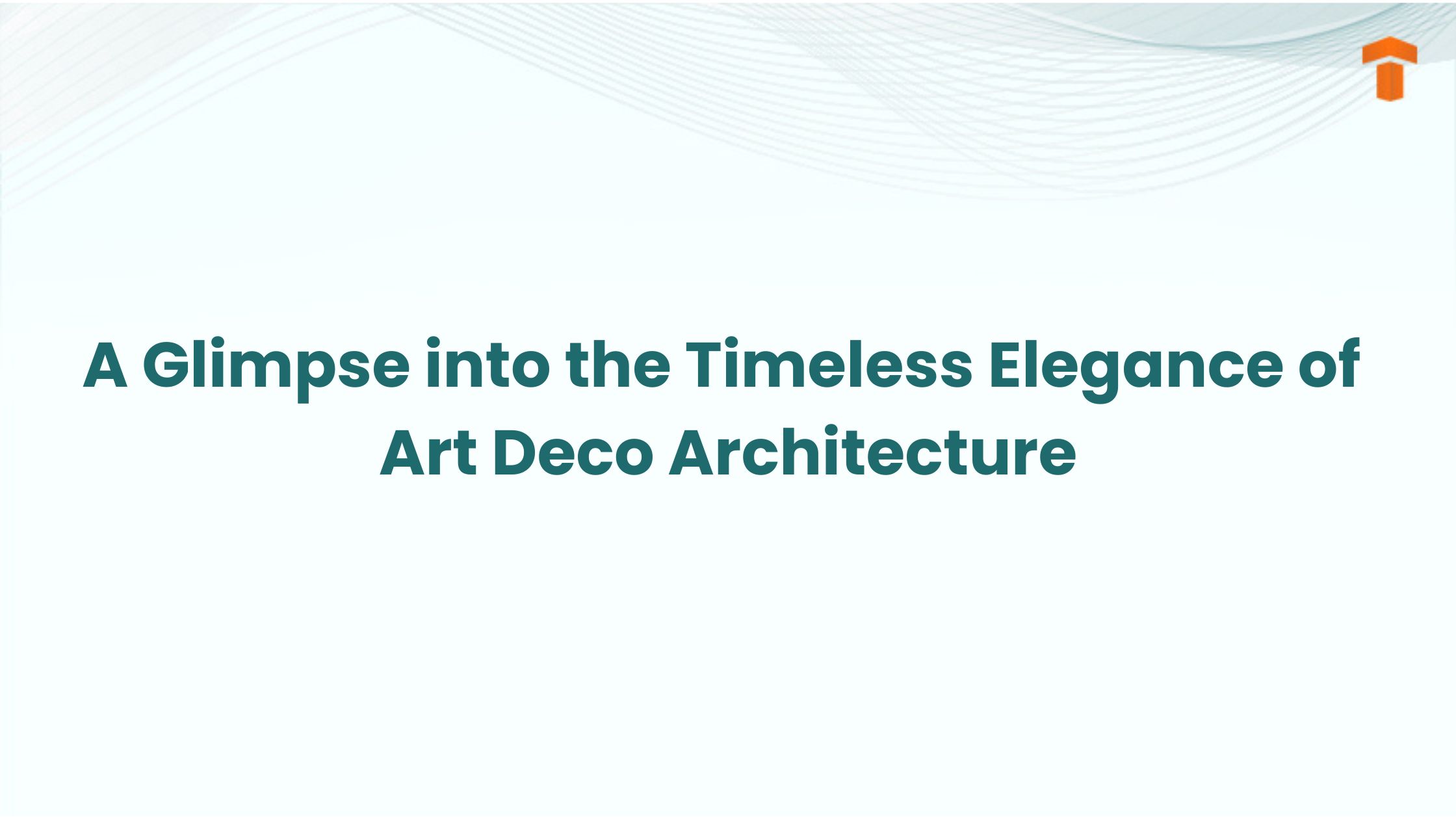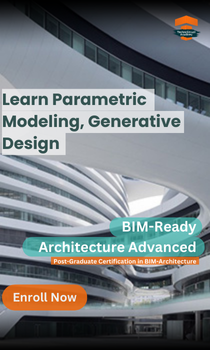A Glimpse into the Timeless Elegance of Art Deco Architecture
Mar 24, 2025
Category: Industry Trends
Admin

Art Deco architecture burst into the architectural scene in the 1920s and 30s and reached its pinnacle. This style of architecture left its lasting mark on the cities from New York and Paris to Shanghai. The remarkable work of renowned designers such as Jean Dunand, Émile-Jacques Ruhlmann, and Pierre Chareau presented at the 1925 Exposition Internationale des Arts Decoratifs et Industriels Modernes in Paris grabbed people’s eyeballs.
Art Deco architecture, influenced by Egypt and ancient art, features veneered surfaces and geometric forms. This blog explores multiple facets of Art Deco design.
History of Art Deco Architecture?
Paris was exposed to the Art Deco style in the early 1920s. However, it officially caught people’s attention at the 1925 Exposition Internationale des Arts Decoratifs et Industriels Modernes. Several prodigy architects showcased their exemplary works at this event, which led to the style being named after it.
This design aesthetic gained popularity worldwide after the event and left its mark in cities such as Paris, New York, and others. However, most structures illustrating Art Deco architecture were built in the 1930s. The Empire State Building, which opened in 1931, is one of the premier examples.
Art Deco Architecture Characteristics
Visible from Any Angle
The standout feature of this architecture is that it can be seen from any angle. While standing next to each other, several buildings appear 2D, while Art Deco ones appear 3D.
In this concept, architects curve or cut the corners, use setbacks, and other designs to make it look 3D. They can achieve it by building a structure higher than others, but they use the former approach to do the same successfully.
Decoration
Decoration is the soul of Art Deco. Ornamentation encompasses two basic types: abstract geometric patterns and sunburst, or stylized floral patterns. In the former, lightning bolts, chevrons, and zigzags are depicted.
The latter illustrates geometric abstraction, bold and symmetrical lines, radiating designs, simplified forms, material use, the addition of stylized vines and leaves, vivid color palettes, and exaggerated proportions. Common Art Deco motifs are Egyptian, Aztec, Mayan, Mesopotamian, and other cultures.
Color
Buildings made following the Art Deco architecture use monotone or grey colors. However, experts from the field emphasize that the case is not the same. The use of vivid colors such as red, green, yellow, and blue is often employed in Art Deco style architecture. Additionally, various brick shades, glossy metal, or terra-cotta ensure exciting hues for the structures. Architects also used contrasting colors such as gold and silver, and black and white.
Verticality
This architectural style makes the buildings appear vertical even if they are not skyscrapers. Architects achieved this effect by using vertical window treatments. They arrange the windows in long, continuous sections, and put them on top of one another. Also, the windows are put behind tall strips of bricks and other materials.
Fragmented Shapes and Consistent Detailing
The building, having this design, has facades that showcase angular and vertical lines. They are pointed in an upward and outward direction. A series of steps followed these triangular shapes, and the steps eventually came to a point.
Furthermore, architects strive to ensure consistency in the building theme by incorporating similar elements in the interiors and exteriors.
Traditional and Contemporary Materials
Architects use innovative and traditional materials in Art Deco architecture. It can be such as decorative glass, stucco, terra-cotta, chrome, steel, and aluminum. They also use new alloys, which make the exteriors of buildings rust-proof.
Types of Art Deco Architecture
Streamline Moderne
It is a substyle of Art Deco, which rose to prominence in the 1930s. Streamline moderne promotes the use of flowing curves and aerodynamic, futuristic, and smooth forms. Sleek designs of airplanes, trains, and automobiles have given birth to this style. Polished surfaces, long horizontal lines, and rounded corners are its major features.
Streamline modern approach encourages simplicity in design with minimal ornamentation. Materials such as glass, stainless steel, and chrome are used for this purpose. These structures have an elegant and minimalist appearance. Ocean liners and gas stations are some examples of these buildings.
Classical Art Deco
Classical Art Deco is the combination of modern and traditional classical architecture. Symmetrical designs, columns, arches, and pilasters are part of this style, and they also feature abstract motifs like chevrons, fluted patterns, and sunbursts.
It is the perfect blend of classical architecture with decorative and sleek touches of Art Deco, which exudes luxury, keeping the formal aesthetics intact. Monumental structures such as government buildings, museums, and grand theaters demonstrate this architectural style.
Zigzag Moderne
In this type of Art Deco architecture, dynamic, geometric shapes, zigzag motifs, stepped designs, and sharp angles are prevalent. Zigzag Moderne offers a sense of energy and movement as it has bold patterns, often with lightning bolt designs or chevrons.
Ornamental elements are angular and stylized, and these designs are often defined by sculptural facades with complex detailing and vivid colors. This style gained popularity in the 1930s and offers a sense of artistic flair and modernity.
Industrial Art Deco
Industrial Art Deco offers glimpses of the emergence of mass production and the machine age. Architects use raw materials such as concrete, steel, and glass in this style. Efficient functionality is the premier objective of this style, and it also uses ornamental elements inspired by contemporary technology. These elements are such as rivets, gears, and streamlined forms.
Minimalist decoration, with clean geometric shapes and lines, is favored in this type of Art Deco architecture. Warehouses, factories, transportation hubs, and bridges commonly have this style.
Exotic Art Deco
Global cultures such as ancient India, Egypt, Africa, and China have influenced the exotic Art Deco. In this Art Deco style architecture, architects create designs blending motifs from such places with geometric shapes and sleek lines of Art Deco. Stylized palm trees, animals, lotus flowers, and complex patterns often decorate Art Deco buildings, especially interiors. A sense of mystery, luxury, and otherworldliness is evoked by them.
The 1920s and 30s witnessed the prime of this style, which delved into colonialism, global exploration, and exotism. Opulent theaters, hotels, and department stores showcase exotic Art Deco.
Art Deco Revival
Architects began the Art Deco revival in the 1980s by incorporating popular bold colors, geometric patterns, and lavish ornamental elements. The idea was to combine 1920s and 30s vintage glamour with innovative designs. They used leading-edge technology and materials for this purpose.
This revival affects architecture, fashion, interior design, and graphic design, which fosters nostalgia without compromising fresh ideas. Upscale hotels, residences, and theaters feature Art Deco revival.
Art Deco Architecture Examples
Empire State Building – New York, USA
The Empire State Building is one of the most famous structures in the world and is an exceptional example of Art Deco architecture. It held the position of the world’s tallest building for several decades since its inauguration in 1931.
This iconic structure, standing in the heart of New York City, captures the attention of visitors. It still represents New York on the global stage even after 90+ years of its making.
Helsinki Central Station – Helsinki, Finland
Helsinki Central Station was built in 1919 after Finland gained independence from Russia in 1917. Suburbs of Helsinki are connected with this station, and a dedicated line takes the passengers to St. Petersburg. The front facade of this station is a fabulous example of Art Deco architecture. It depicts several sculptural elements from the Art Deco era.
These sculptures are not exact replicas of humans, however, they still capture the essence of the human form as they are diagrammatic. Several Art Deco buildings have such simplified forms. However, they differ from Beaux-Arts and Art Nouveau sculptures that were well-known in the early 1990s.
National Diet Building – Tokyo, Japan
The National Diet Building is the hub of the Japanese House of Representatives and House of Councillors. It is close to the Imperial Palace as it is located in Tokyo’s Chiyoda ward. This building’s design follows the Art Deco style and has stood tall since 1936. A fire destroyed the earlier structure in the early 20th century and paved the way for this building.
Several iterations were done, and an extensive design competition was held to select the design of the National Diet Building. Officials faced the dilemma of designing the building to incorporate traditional Japanese architectural values or to follow the European-style Revivalist building. Eventually, they found an Art Deco design more innovative and aesthetic in that era.
Australian War Memorial – Canberra, Australia
Art Deco architecture is one of the most used styles in the world and is present in Australia. Canberra’s Australian War Memorial is a leading example of this architecture. Australia constructed this monument to commemorate the soldiers who sacrificed their lives for the country.
It is one of the finest national landmarks of Australia since its completion in 1941. The design of this building does not have many sculptures, but it attracts visitors with its somber and reserved features. The austere and bold features of Art Deco make it special.
Eden Theater – Lisbon, Portugal
The Eden Theater enhances the beauty of Lisbon, standing in front of Rossio Square in Lisbon. This building, which was completed in 1931, was one of the luxurious theaters of the city till the 1980s. Now, the Eden Theater serves as a hotel to complement the city’s tourism. Its front facade features many unique Art Deco sculptures. This building showcases various geometric and metal accents.
Final Thoughts
The Art Deco architecture had relevance until around 1940. It was the beginning of modern architecture, as many renowned architects entered the fray. This period of art deco style is considered the transitional phase from traditional styles to modern ones. This era spans from 1925 to 1940 and can be recognized in various structures, especially in America and Europe.
FAQs
Q1. What is the rule of three in Art Deco?
Ans. This rule of Art Deco architecture suggests that it is visually appealing and creates a balanced composition if things are grouped in threes. Items look pleasing to the eyes when they are put in groups of three. It might seem illogical, however, objects grouped in odd numbers are more memorable than those grouped in even numbers.
Q2. What are the principles of the Art Deco style?
Ans. Here are some of the major principles of Art Deco architecture:
- Layered shapes.
- Symmetry.
- Intricate line art.
- Aerodynamic curves.
- Rectangular geometry.
- Metallic colors like chrome and gold.
Q3. Why did Art Deco end?
Ans. Art Deco kept thriving in the 1930s despite the great depression sweeping its vibrancy. However, this style could not survive the effects of World War II, and it lost its influence on society and culture. A new generation of designers took the helm and facilitated more uniform and muted styles of modernism.








